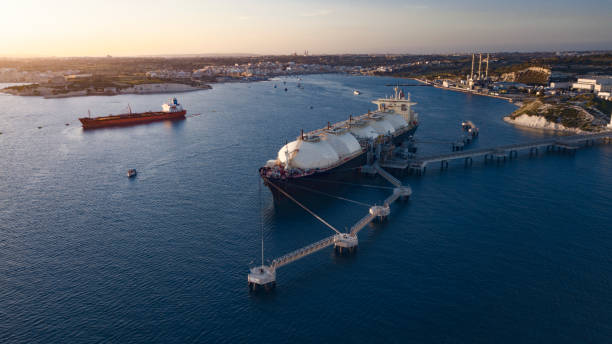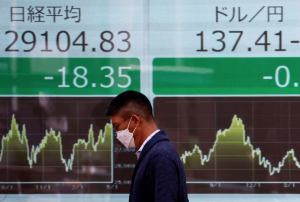(ATF) Aside from economic growth during a global pandemic, China appears to be also projecting an increase in natural gas demand this winter while other major Asian powers’ gas demand is either expected to remain flat or increase only incrementally.
On Thursday, the country’s three state-run oil majors said that China’s natural gas demand this winter will increase around 10% year over year, due to robust economic recovery from the coronavirus and ramped up residential and industrial demand.
Last year, China’s winter gas demand expanded by only 0.3% due to warmer temperatures in the northern hemisphere and demand destruction triggered by the Covid-19 pandemic.
Oil major Sinopec said that gas demand this winter will reach 148 billion cubic meters (bcm), up 11.8 bcm year on year. Total Chinese gas demand for the year will likely reach 310 bcm, an increase of 9 bcm over last year, Sinopec added.
Chinese Offshore Oil Corp. (CNOOC), the country’s largest liquefied natural gas (LNG) importer, projected total gas demand for the year between 320-325 bcm.
Executives from these companies added that with higher LNG imports, along with increased domestic gas production, China will experience a relatively balanced market for its heating season which runs from mid-October through March when gas demand usually peaks.
Past miscalculations
However, achieving a balanced gas market in China is not a usual phenomenon. Just three years ago, Beijing energy planners prematurely banned coal heating for residential end-users for the winter season and forced a switch to gas.
The policy resulted in a crippling gas shortage in some cities as colder than normal temperatures forced industrial gas supply to be redirected to residential end users. It also caused planners to revert back to more coal usage.
The miscalculation not only caught Beijing off-guard, but also surprised global energy analysts and pundits.
Since then, the country has taken numerous steps to improve gas management policy, and build more gas storage, even as winters over the past two years have been much milder.
The increased gas demand has come as a relief for the region’s beleaguered LNG markets that have been suffering ever since spot prices in Asia dipped beneath the $2/million British thermal unit (MMBtu) price in April. That historic low was well beneath the break-even point of most producers.
The prices though, have staged a smart comeback since then.
LNG spot prices for delivery into north Asia last week increased to US$7.50/MMBtu, a 9% increase over the previous week. For the month of October, LNG spot prices also spiked some 40% due to colder weather forecasts for north Asia, home to around two-thirds of global LNG demand.
Production outages in Australia and elsewhere in the region also contributed to that spike.
READ MORE: China CNOOC says to raise gas’ share to half of output by 2035
Prices are now at their highest in 20 months – a welcome development for producers saddled with lower profits but dismal news for countries that had been bargain hunting and snapping up more cargoes.
But going forward, the markets could face headwinds as forecasts of colder temperatures driving up the price support conflict against the possibility of a further Covid-driven demand destruction.
The potential of a second waves of infection in a number of countries in the region, is also adding to the fear of softening gas prices.
But analysts also say that barring a ramp up in Covid cases in Asia, gas and LNG demand will be mainly driven by China and other key buyers,
“We expect LNG demand to increase by 4 bcm this winter and that’s led by growth in China, Japan, and South Asia. LNG supply is expected to grow by 3 bcm led by the US. And when we put together demand and supply forecast, we expect the LNG market to be slightly tighter than last winter by 1 bcm,” Refinitiv analysts said.
Chinese geopolitical gamesmanship
As second largest LNG buyer after Japan, China will continue to reshape the market for the fuel not only this winter but going forward as well, with Beijing mandating that cleaner burning gas make up at least 10% of the country’s energy mix this year, going up to 15% by 2030.
China is also forecast to bypass Japan as early as 2022 to take the top global LNG importing slot.
That aside, LNG is also seen as a conduit for Chinese president Xi Jinping’s newly stated pledge of making China carbon neutral by 2060 which, given its heavy dependence on coal, still seems like an unmanageable feat.
As China emerges as the top LNG importer, despite its current oversupply that could last until the middle of the decade, it will have a plethora of producers to choose from for both long term agreements, and short term and pure spot deals.
Already, major supplying countries including Australia, Qatar, the world’s second largest producer, Russia, Indonesia, Malaysia, and the US, currently the world’s third largest LNG producer, are queuing up to strike more new deals with China.
These countries seem to be undaunted even as Beijing has played geopolitical hardball this year with Australian imports of cotton, coal and wine.
But while there’s a possibility of Australia and the US ceding potential market share due to geopolitical gamesmanship by Beijing, Qatar, Russia and other LNG producers could fill the void.
Russian pipeline natural gas will also create more competition for these LNG producers, particularly as Sino-Russian energy and political cooperation matures and as more gas infrastructure from Russia into China is completed.
READ MORE: PowerChina eyes rail line to transport oil and gas in Argentina
























